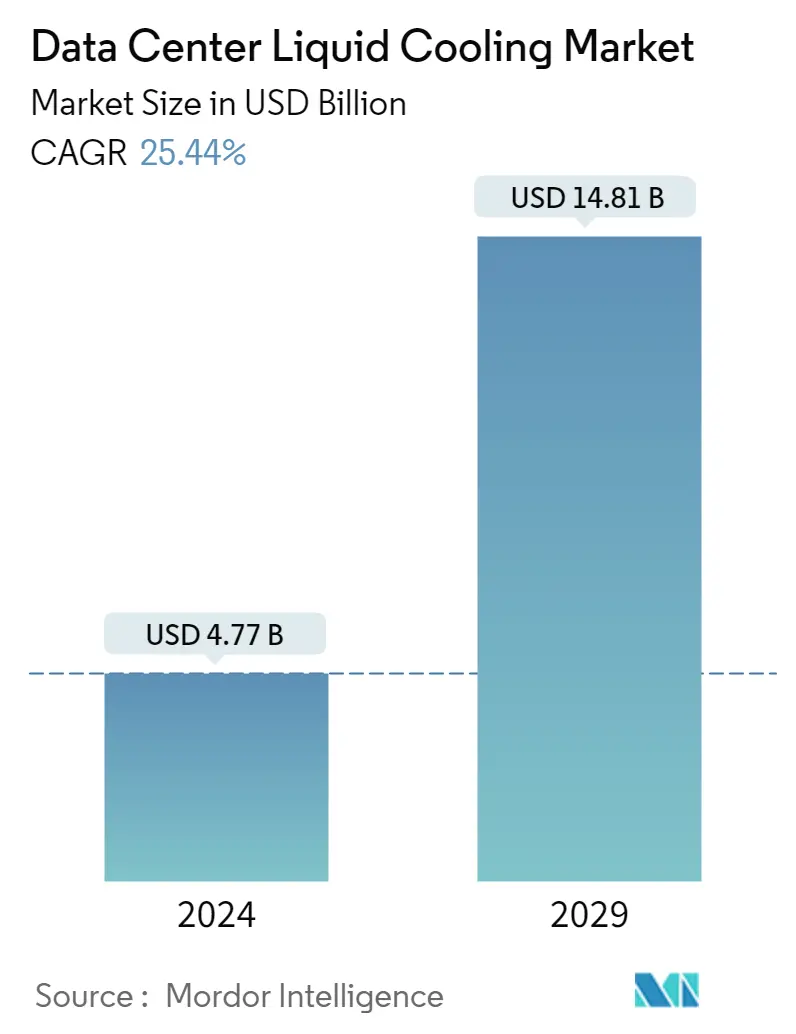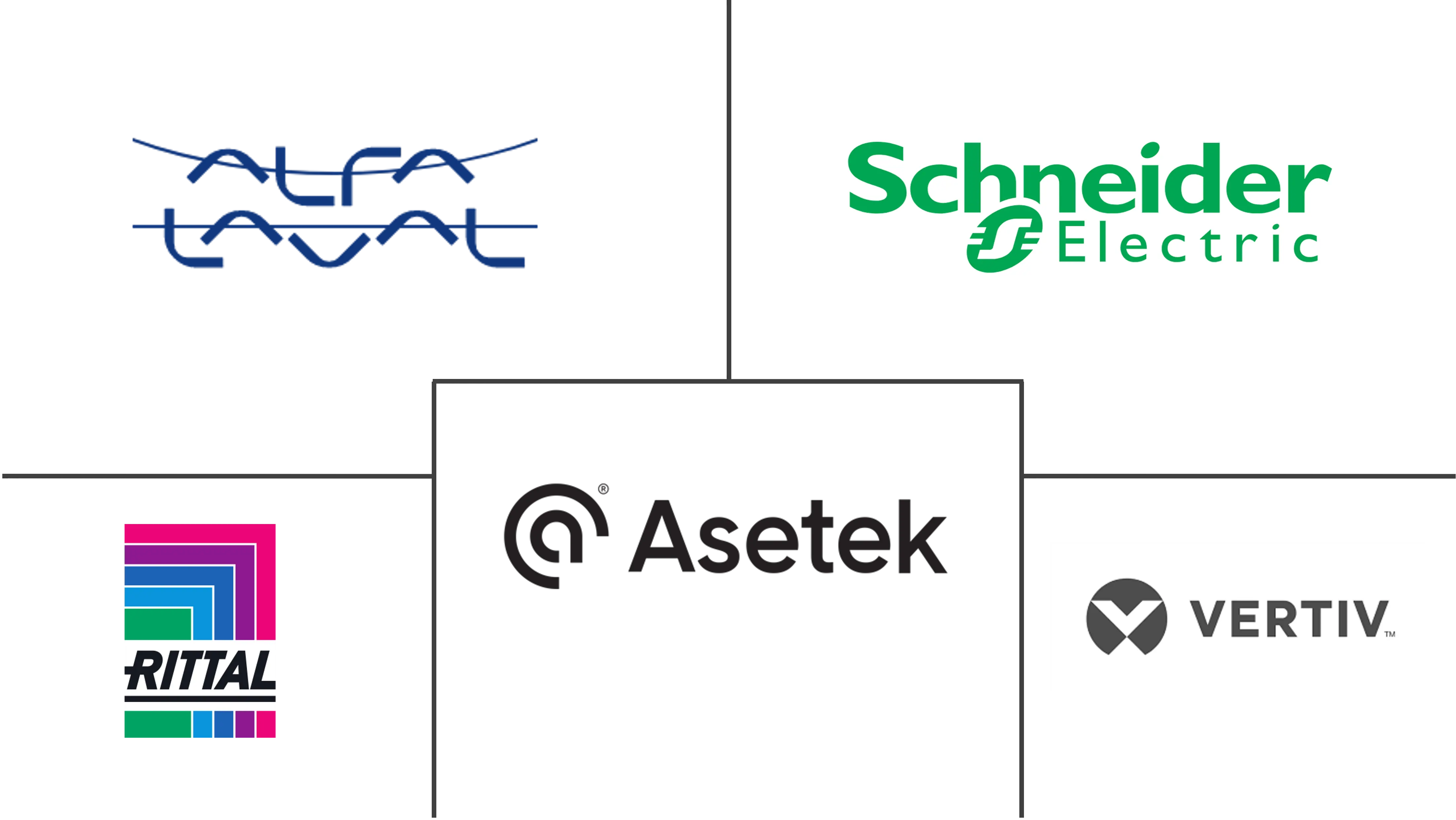Market Size of Data Center Liquid Cooling Industry

| Study Period | 2022 - 2029 |
| Market Size (2024) | USD 4.77 Billion |
| Market Size (2029) | USD 14.81 Billion |
| CAGR (2024 - 2029) | 25.44 % |
| Fastest Growing Market | Asia Pacific |
| Largest Market | North America |
Major Players
*Disclaimer: Major Players sorted in no particular order |
Need a report that reflects how COVID-19 has impacted this market and its growth?
Data Center Liquid Cooling Market Analysis
The Data Center Liquid Cooling Market size is estimated at USD 4.77 billion in 2024, and is expected to reach USD 14.81 billion by 2029, growing at a CAGR of 25.44% during the forecast period (2024-2029).
Technological advancements have made liquid cooling simple to maintain, easily scalable, and affordable and have reduced liquid usage by more than 15% for data centers in built-in hot and humid climates and 80% in more excellent areas. The energy dedicated to liquid cooling can be recycled to heat buildings or water, effectively shrinking the carbon footprint of air conditioning due to the application of advanced engineering coolants.
- Other benefits of liquid cooling include higher capacity than air cooling, providing the same cooling with a much larger volume, reduced overall capacity requirement due to applying high-power density components directly, and efficient heat rejection. The dielectric liquid used in the direct liquid cooling method effectively absorbs heat. Hence, more hardware can be inserted into a smaller space, lowering the need for additional space to accommodate the hardware.
- A green data center is where data is stored, managed, and distributed. The mechanical, lighting, electrical, and computer systems are planned to be as energy-efficient as possible while minimizing their adverse environmental effects. Innovative techniques and technologies are used in building and running green data centers. With the exponential growth and usage of the Internet, power consumption in data centers has increased significantly. Companies are under more pressure to adopt a green policy due to the environmental impact, rise in public awareness, higher cost of energy, and governmental action. These factors have made the development of sustainable data centers directly drive the data center liquid cooling market.
- On the other hand, Operators of data centers wishing to employ cooling systems face substantial challenges due to the requirements for adaptability. Data centers are complex, with a vast server array, and they carry the uncertainty of quantity, timing, and location. When cooling at such a high density, many extra expenses are incurred. To satisfy the demands of the data center, it must be adaptable and scalable. Companies are worried if their current cooling systems can support the increased server load in the future. This makes infrastructure changes frequent and pushes companies unwilling to invest much in newer cooling systems.
- Furthermore, the COVID-19 epidemic has significantly increased the demand for data centers. As more employees work from home, video calls and VPN usage are rising. The use of telehealth applications by allied health practitioners is expanding.
- In New York, telehealth visits have increased by 312%, as per Amwell. To keep entertained and in touch with loved ones, consumers are also heavily utilizing streaming services, which are becoming more readily available due to service providers like Verizon, who enhance their bandwidth capacity. Such industry changes have fueled the desire for cloud-based solutions, fueling demand for data centers and their related sectors.
